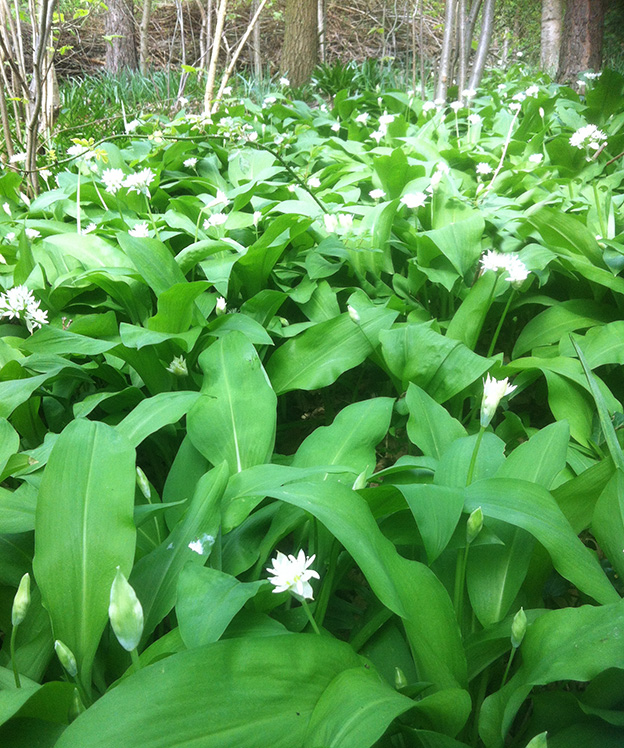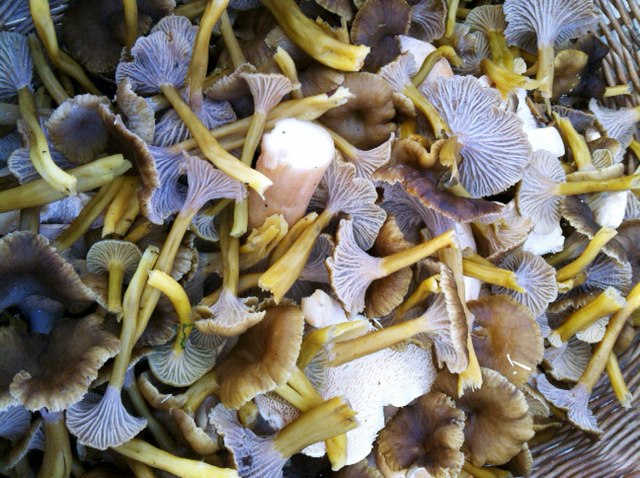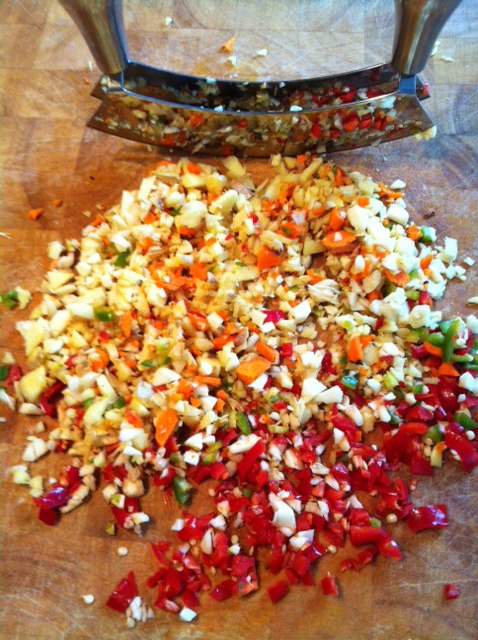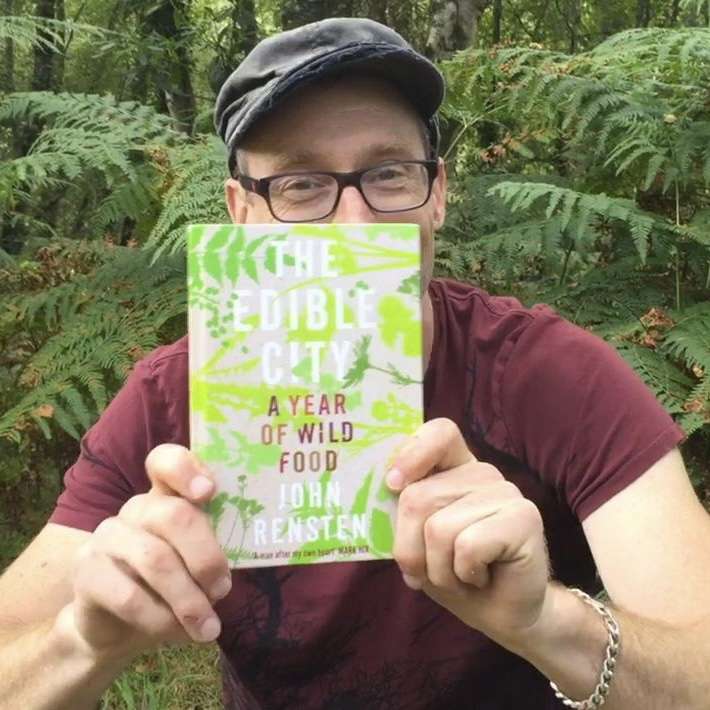 Big cities like London; magical, vibrant and eclectic environments in which to exist. Perhaps the reason so many of us choose to spend so much time living and working in them, although the flip side to all this wonderful humanity, squashed in together, is never more evident, than come winter time. A hot, packed ride on the London underground can bring even the most tolerant of us (that’s not me even at the best of times), into such close proximity with our fellow urbanites, that it’s pretty much impossible to not share whatever germs are currently doing the rounds. Unlike me, many Londoners have no option but to ride the tube, spend time in big offices and basically breath the same air as they do so. So, this month, I have some suggestions for boosting the immune system to epic, almost super hero status, combating a whole host of winter viruses and generally staying healthy, and a little smug, in the process. I literally think of this as a battle and if we are to go to war, we need not only the right mind set, but most of all, plenty of weapons! As I’m fond of telling people, I’m not a qualified herbalist, not actually a qualified anything (oh, I do hold a UK Inn Keepers certificate, so I’m qualified to run a pub into the ground), but I have spent a few years looking at home remedies and many years foraging, which does dove tale into numerous topics; herbalism, medicine, nutrition, plant science, botany, cookery etc etc, so what I offer here are my thoughts on the topic, rather than any type of specific medical advice. It’s enormously important that everyone does their own research and, in the same way that it makes sense to do a basic tolerance test when trying any new food, it’s vitally important to make sure there are no adverse effects, allergies and the like, caused by ingesting small or large amounts of the plants, herbs and fungi that I suggest. None of these have any “contraindications” and I get on well with all of them , but we are all wired differently and as with all things in life, it pays to test the water before you jump straight in at the deep end. Enough said, here’s the good stuff…..
Big cities like London; magical, vibrant and eclectic environments in which to exist. Perhaps the reason so many of us choose to spend so much time living and working in them, although the flip side to all this wonderful humanity, squashed in together, is never more evident, than come winter time. A hot, packed ride on the London underground can bring even the most tolerant of us (that’s not me even at the best of times), into such close proximity with our fellow urbanites, that it’s pretty much impossible to not share whatever germs are currently doing the rounds. Unlike me, many Londoners have no option but to ride the tube, spend time in big offices and basically breath the same air as they do so. So, this month, I have some suggestions for boosting the immune system to epic, almost super hero status, combating a whole host of winter viruses and generally staying healthy, and a little smug, in the process. I literally think of this as a battle and if we are to go to war, we need not only the right mind set, but most of all, plenty of weapons! As I’m fond of telling people, I’m not a qualified herbalist, not actually a qualified anything (oh, I do hold a UK Inn Keepers certificate, so I’m qualified to run a pub into the ground), but I have spent a few years looking at home remedies and many years foraging, which does dove tale into numerous topics; herbalism, medicine, nutrition, plant science, botany, cookery etc etc, so what I offer here are my thoughts on the topic, rather than any type of specific medical advice. It’s enormously important that everyone does their own research and, in the same way that it makes sense to do a basic tolerance test when trying any new food, it’s vitally important to make sure there are no adverse effects, allergies and the like, caused by ingesting small or large amounts of the plants, herbs and fungi that I suggest. None of these have any “contraindications” and I get on well with all of them , but we are all wired differently and as with all things in life, it pays to test the water before you jump straight in at the deep end. Enough said, here’s the good stuff…..
1. Garlic, in all it’s wonderful wild and non wild guises.
 Blessed with numerous types of wild garlic, the UK has an abundance of Ransoms, Three Cornered Leek, Crow Garlic, Wild Leek and various other edible members of this Allium genus. The late Autumn and winter months offer a few of these, Wild Garlic (aka Ransoms, pictured) coming as early as February in London, but my current fav’, due mostly to it’s continued availability, is Three Cornered Leek, a non native but one that loves it here and gives us edible leaves/stems, bulbs and flowers, starting in Autumn and going all the way through to late Spring/early Summer. Equipped with numerous health enhancing properties, more so than any other easily available and delicious food I can think of, Garlic has the wonderful ability to turn “bad” cholesterol (LDL) into “good” cholesterol (HDL), to reduce blood pressure and to stabilise blood sugar levels. It’s also a very good natural antibiotic, an antiseptic and a natural expectorant (helping to thin and clear mucus). If that wasn’t enough, garlic is an excellent aid to detoxification which in turn helps to support the liver. It does this by binding with and then “destroying” heavy metals. Furthermore, garlic boosts and supports the immune system, draws out colds by drying the lungs and acts as an anti microbial and anti fungal to fight parasitic infections. WOW! And it tastes fantastic and has a multitude of culinary uses.
Blessed with numerous types of wild garlic, the UK has an abundance of Ransoms, Three Cornered Leek, Crow Garlic, Wild Leek and various other edible members of this Allium genus. The late Autumn and winter months offer a few of these, Wild Garlic (aka Ransoms, pictured) coming as early as February in London, but my current fav’, due mostly to it’s continued availability, is Three Cornered Leek, a non native but one that loves it here and gives us edible leaves/stems, bulbs and flowers, starting in Autumn and going all the way through to late Spring/early Summer. Equipped with numerous health enhancing properties, more so than any other easily available and delicious food I can think of, Garlic has the wonderful ability to turn “bad” cholesterol (LDL) into “good” cholesterol (HDL), to reduce blood pressure and to stabilise blood sugar levels. It’s also a very good natural antibiotic, an antiseptic and a natural expectorant (helping to thin and clear mucus). If that wasn’t enough, garlic is an excellent aid to detoxification which in turn helps to support the liver. It does this by binding with and then “destroying” heavy metals. Furthermore, garlic boosts and supports the immune system, draws out colds by drying the lungs and acts as an anti microbial and anti fungal to fight parasitic infections. WOW! And it tastes fantastic and has a multitude of culinary uses.
2. Immune boosting mushrooms.
 The season to forage for most of these may be behind us but a few of the most effective are always available to buy online, some with wonderful names like Reishi, Chaga, Agaricon and Turkey Tail (well known in Chinese herbal medicine), can be consumed as a powder, a tablet or in a tea, while others like Oyster Mushrooms and Shitaki Mushrooms are more familiar as popular foods. Last year I started researching some of these in more detail and was pleased to find that one of our most common “bracket” mushrooms has many of the incredible medicinal properties that I had assumed only came from more exotic species. The Birch Polypore, also called Birch Conk or Razor Strop Fungus, is a very easy to ID mushroom, growing on dead or dying Birch trees and found all across the UK. I won’t go into all the ID details here but this is a very chunky, rubbery bracket, with a mid brown top side and a white/cream underside. Otzi, the 5300 year old ice man, was found with pieces of this fungus and it’s medicinal uses are well documented throughout history, in more recent times having been proven to be anti bacterial, anti viral, anti microbial and also great at stimulating the immune system. American Mycologists like Robert Rogers and Paul Stamets have demonstrated that this mushroom’s numerous triterpenes, betulins, betulinic and agaric acids and beta glucans, give it tumour suppressing and immune boosting properties, making it, and more commonly used, Turkey Tail Mushroom, an excellent complimentary medicine for anyone undergoing more conventional treatments for cancer and other auto immune diseases. I have no desire to dish out unqualified medical advice but anyone interested in this topic should consider buying Robert Rogers book, The Fungal Pharmacy.
The season to forage for most of these may be behind us but a few of the most effective are always available to buy online, some with wonderful names like Reishi, Chaga, Agaricon and Turkey Tail (well known in Chinese herbal medicine), can be consumed as a powder, a tablet or in a tea, while others like Oyster Mushrooms and Shitaki Mushrooms are more familiar as popular foods. Last year I started researching some of these in more detail and was pleased to find that one of our most common “bracket” mushrooms has many of the incredible medicinal properties that I had assumed only came from more exotic species. The Birch Polypore, also called Birch Conk or Razor Strop Fungus, is a very easy to ID mushroom, growing on dead or dying Birch trees and found all across the UK. I won’t go into all the ID details here but this is a very chunky, rubbery bracket, with a mid brown top side and a white/cream underside. Otzi, the 5300 year old ice man, was found with pieces of this fungus and it’s medicinal uses are well documented throughout history, in more recent times having been proven to be anti bacterial, anti viral, anti microbial and also great at stimulating the immune system. American Mycologists like Robert Rogers and Paul Stamets have demonstrated that this mushroom’s numerous triterpenes, betulins, betulinic and agaric acids and beta glucans, give it tumour suppressing and immune boosting properties, making it, and more commonly used, Turkey Tail Mushroom, an excellent complimentary medicine for anyone undergoing more conventional treatments for cancer and other auto immune diseases. I have no desire to dish out unqualified medical advice but anyone interested in this topic should consider buying Robert Rogers book, The Fungal Pharmacy.
3. Turmeric, Ginger, Chilli and many other wonderful spices.
 The basic rule of thumb is this; cook with spices, as many of them as you can, all winter long. Without doubt, the most powerful combatant of any Winter cold is my Super Spicy Blow Your Head Clean Off Immune Boosting Soup. This contains utterly masses of Turmeric, the medicinal properties of which are extraordinary; here’s just a few…anti inflammatory, anti biotic, antiseptic, analgesic, blood purifying, aids digestion and reduces wind, strengthens ligaments and lowers cholesterol. Further more, Turmeric has been used in treatments for asthma, arthritis, MS, eczema, psoriasis, to boost the immune system during chemotherapy and to slow the progression of Alzheimer’s. And that’s just one common herb that’s easily available to us and can be incorporated into almost all Winter cooking. Add to this some Garlic, the virtues of which we have already discussed and fresh or powdered chilli to help purify the blood and boost the circulation; the alkaloid Capsaicin, which gives chillies that characteristic strong, spicy flavour has been shown in laboratory studies, to be anti-bacterial, anti-carcinogenic, analgesic and anti-diabetic. Next we have Ginger, a plant I have heard described as ‘The world’s healthiest food” fantastic just cut into chunks and used as a tea (also great with slices of fresh Turmeric root added), well known for it’s calming effects on the stomach, as an immune booster and as a treatment for nausea and vomiting. Further studies have shown that Ginger is effective in helping fight ovarian and colon cancer. Obviously there are numerous ways to ingest these and many other “super food” spices we have at our disposal but if you find you have neglected your spice intake or have succumbed to a Winter cold or flu or are just generally a bit sluggish and below par, this recipe, the first section of a piece I wrote last year, will most definitely be the kick up the arse you need.
The basic rule of thumb is this; cook with spices, as many of them as you can, all winter long. Without doubt, the most powerful combatant of any Winter cold is my Super Spicy Blow Your Head Clean Off Immune Boosting Soup. This contains utterly masses of Turmeric, the medicinal properties of which are extraordinary; here’s just a few…anti inflammatory, anti biotic, antiseptic, analgesic, blood purifying, aids digestion and reduces wind, strengthens ligaments and lowers cholesterol. Further more, Turmeric has been used in treatments for asthma, arthritis, MS, eczema, psoriasis, to boost the immune system during chemotherapy and to slow the progression of Alzheimer’s. And that’s just one common herb that’s easily available to us and can be incorporated into almost all Winter cooking. Add to this some Garlic, the virtues of which we have already discussed and fresh or powdered chilli to help purify the blood and boost the circulation; the alkaloid Capsaicin, which gives chillies that characteristic strong, spicy flavour has been shown in laboratory studies, to be anti-bacterial, anti-carcinogenic, analgesic and anti-diabetic. Next we have Ginger, a plant I have heard described as ‘The world’s healthiest food” fantastic just cut into chunks and used as a tea (also great with slices of fresh Turmeric root added), well known for it’s calming effects on the stomach, as an immune booster and as a treatment for nausea and vomiting. Further studies have shown that Ginger is effective in helping fight ovarian and colon cancer. Obviously there are numerous ways to ingest these and many other “super food” spices we have at our disposal but if you find you have neglected your spice intake or have succumbed to a Winter cold or flu or are just generally a bit sluggish and below par, this recipe, the first section of a piece I wrote last year, will most definitely be the kick up the arse you need.
https://www.foragelondon.co.uk/winter-health-happiness
4. Berries Berries Berries Berries Berries.
 It’s a strange form of human arrogance that we assume bright colours in nature are all there for our benefit, either as a warning or an indication that something is particularly tasty. Some of the most beautiful mushrooms are the most deadly (so are some of the drabbest looking) and some with the most colourful and lurid caps are tasty edibles. When it comes to berries, very often the strong reds and purples are a very good indicator of the plentiful presence of anti oxidants, rather than harmful toxics, not always though, the shiny black berries of Deadly Nightshade look very tasty too. So long as we can sort the delicious from the deadly, it pays to spend the Winter months scoffing as many of these genuine Super Foods as possible. On the home front we have natives like Hawthorn, Sloe, Rowan, Cockspur, Sea Buckthorn, Crab Apples and Rose Hips (yes I realise these last 2 aren’t really berries) and a trip to the shops will produces a vast array of either out of season berries or more exotic varieties. However you choose to get your fix, and this could be anything from a Hawthorn Ketchup to a Rose Hip Vinegar or a Blueberry Compote, you will be eating masses of Vitamin C, Pectin, Flavanoids (anti inflammatory, anti viral, anti fungal, anti bacterial and aiding assimilation and absorption of other beneficial plant alkaloids), Phytonutrients (plant alkaloids and compounds designed to aid and protect the plant but enormously beneficial to human health and sadly missing from much of our modern food chain) and last but by no means least, Anti Oxidants. What exactly are these mysterious substances anyway? Well, I knew that they were chemicals that inhibited the activity of Free Radicals, but what in turn are they? In the most basic terms (that’s how I think), they are electrons that have broken loose from their intended molecule and, in this new, free state, can cause various types of cell damage making us susceptible to viruses and numerous other conditions, especially as we get older. I asked a knowledgable friend how Anti Oxidants combatted Free Radicles, did they prevent molecules splitting in the first place or form gangs that go around beating up free radicals or by whatever means, encourage free radicals to reunite with their missing partners and thus stop being free, radical and troublesome? Her answer was a few pages long but basically suggested that they did all three…I can’t honestly claim to have my head round this at all but just wanted to add something by way of research instead of just bandying these terms around without really knowing what they meant. I hope this is vaguely helpful, not just vague.
It’s a strange form of human arrogance that we assume bright colours in nature are all there for our benefit, either as a warning or an indication that something is particularly tasty. Some of the most beautiful mushrooms are the most deadly (so are some of the drabbest looking) and some with the most colourful and lurid caps are tasty edibles. When it comes to berries, very often the strong reds and purples are a very good indicator of the plentiful presence of anti oxidants, rather than harmful toxics, not always though, the shiny black berries of Deadly Nightshade look very tasty too. So long as we can sort the delicious from the deadly, it pays to spend the Winter months scoffing as many of these genuine Super Foods as possible. On the home front we have natives like Hawthorn, Sloe, Rowan, Cockspur, Sea Buckthorn, Crab Apples and Rose Hips (yes I realise these last 2 aren’t really berries) and a trip to the shops will produces a vast array of either out of season berries or more exotic varieties. However you choose to get your fix, and this could be anything from a Hawthorn Ketchup to a Rose Hip Vinegar or a Blueberry Compote, you will be eating masses of Vitamin C, Pectin, Flavanoids (anti inflammatory, anti viral, anti fungal, anti bacterial and aiding assimilation and absorption of other beneficial plant alkaloids), Phytonutrients (plant alkaloids and compounds designed to aid and protect the plant but enormously beneficial to human health and sadly missing from much of our modern food chain) and last but by no means least, Anti Oxidants. What exactly are these mysterious substances anyway? Well, I knew that they were chemicals that inhibited the activity of Free Radicals, but what in turn are they? In the most basic terms (that’s how I think), they are electrons that have broken loose from their intended molecule and, in this new, free state, can cause various types of cell damage making us susceptible to viruses and numerous other conditions, especially as we get older. I asked a knowledgable friend how Anti Oxidants combatted Free Radicles, did they prevent molecules splitting in the first place or form gangs that go around beating up free radicals or by whatever means, encourage free radicals to reunite with their missing partners and thus stop being free, radical and troublesome? Her answer was a few pages long but basically suggested that they did all three…I can’t honestly claim to have my head round this at all but just wanted to add something by way of research instead of just bandying these terms around without really knowing what they meant. I hope this is vaguely helpful, not just vague.
TO COME IN PART II
5. Vitamin D and The Great Outdoors.
6. The Mighty Wild Green Smoothy.
7. Echinacea Tincture and Seaweed Nasal Sprays (don’t scoff, read the report first).
8. Everything you need from Mulled Wine to Spicy Chicken Soup.


Thanks John…very useful, generous info…shall embrace it all and get growing three cornered leek!
thanks helen, if you do grow it, be prepared for it to spread!
DON’T plant three cornered leek AKA the cornered garlic AKA allium triquetrum – it is an invasive non-native species which spreads like wildfire and crowds out native plants like bluebells. It is impossible to eradicate once you’ve got it – it’s just not worth it.
I think that’s some very sound advice Catriona, and as a result there is no shortage of it to pick wild so not really any point cultivating it
I never knew that what I’ve got growing in my garden was called three cornered leek.!! I use it in soups, sandwiches, tomato salad etc. I thought it was a larger version of chives!! Lol
Great information as always thank you john